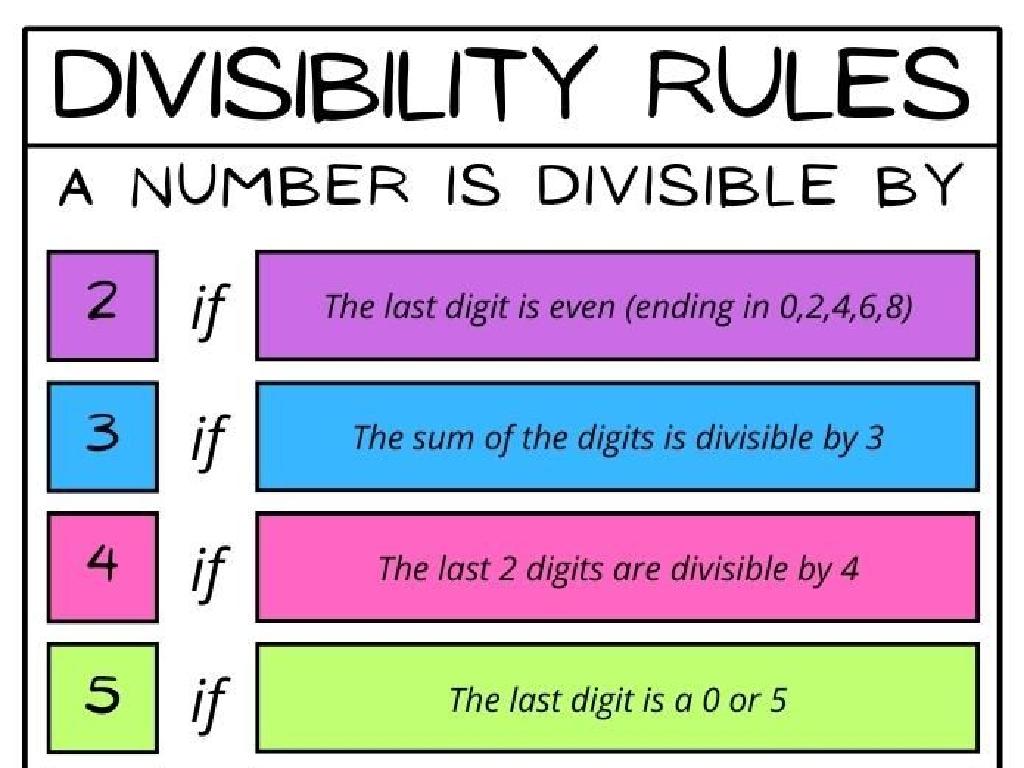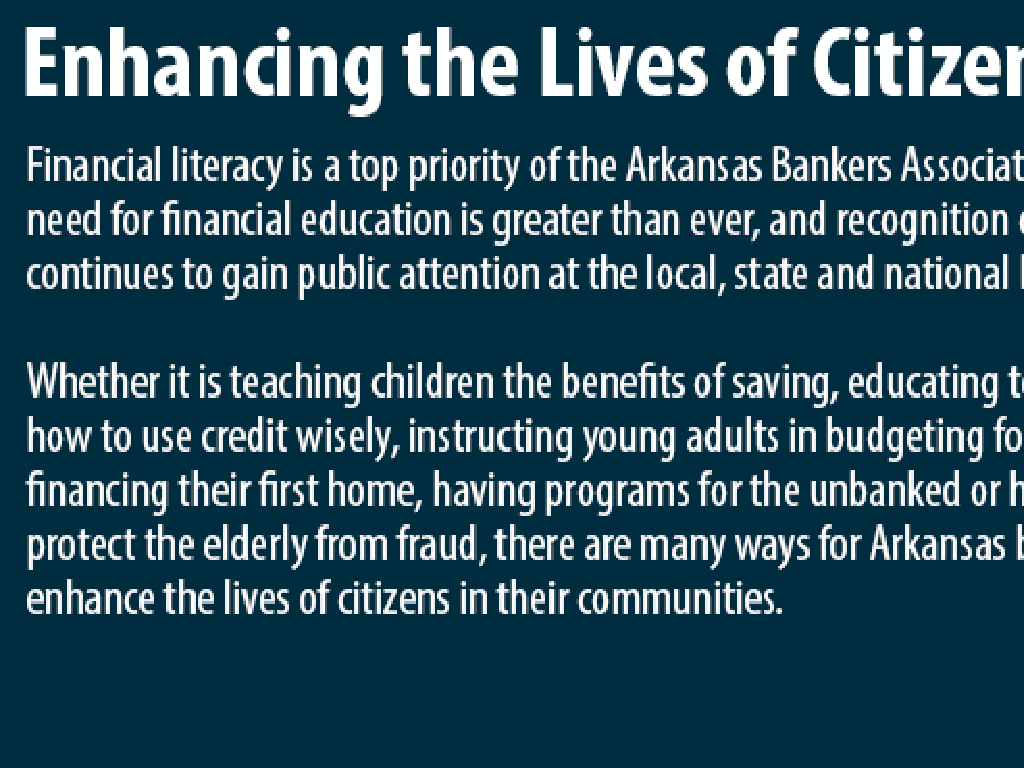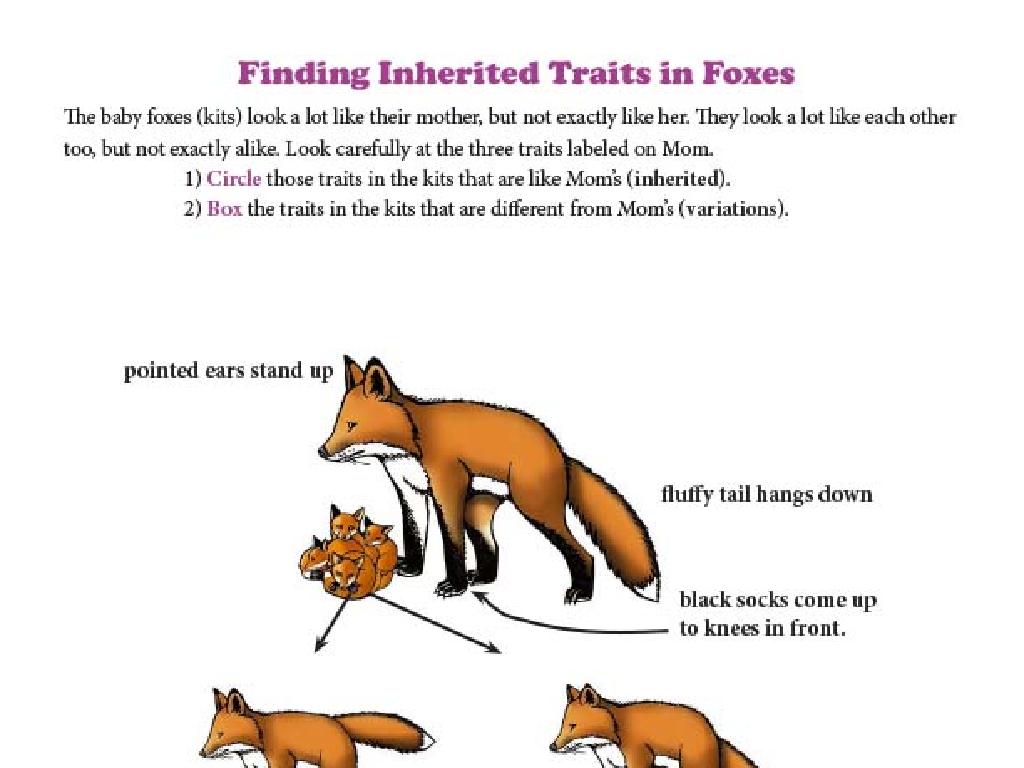Make And Take Apart Teen Numbers: Addition Sentences
Subject: Math
Grade: Kindergarten
Topic: Count Tens And Ones - Up To 20
Please LOG IN to download the presentation. Access is available to registered users only.
View More Content
Welcome to Teen Numbers!
– Learn about teen numbers
– Understand numbers 11-20
– Numbers after 10 and before 21
– Making and taking apart numbers
– Break down numbers into 10s and 1s
– Addition sentences with teen numbers
– Example: 14 is 10 + 4
|
This slide introduces kindergarteners to the concept of teen numbers, which are the numbers from 11 through 20. The goal is to help students recognize these numbers and understand that they are made up of tens and ones. For instance, the number 14 can be seen as one group of ten and four ones. Use visual aids like blocks or counters to show how these numbers can be constructed and deconstructed. This will set the foundation for addition sentences where students can practice adding numbers within the teen range. Encourage hands-on activities where students can physically group items to represent these numbers.
Exploring Teen Numbers
– Teen numbers begin after 10
– Range from 11 to 19
– ‘1’ in the tens place
– It means there is one group of ten.
– Understanding teen numbers
– Helps with addition and subtraction
|
This slide introduces the concept of teen numbers to Kindergarten students. Teen numbers are those that come after 10 and go up to 19. It’s important to highlight that all teen numbers have a ‘1’ in the tens place, which signifies that there is one group of ten in these numbers. Understanding teen numbers is crucial as it lays the foundation for addition and subtraction within 20. During the presentation, use visual aids like blocks or counters to show groups of ten and ones. Encourage students to count from 11 to 19 with you and use their fingers to represent the ‘ones’ place. This tactile approach helps solidify their comprehension of teen numbers as composed of tens and ones.
Counting to 20: Teen Numbers
– Count from 1 to 20 together
– Teen numbers start after 10
– Numbers 11 through 19 are called ‘teen numbers’
– Practice counting teen numbers
– Let’s count: 11, 12, 13… up to 20
– Understand teen number structure
– Teen numbers have a ‘ten’ and some ‘ones’: like 14 is 10 and 4
|
This slide is aimed at helping Kindergarten students recognize and count from 1 to 20, with a focus on understanding the structure of teen numbers. Begin by counting together as a class, emphasizing the sequence and the rhythm of the numbers. Highlight the transition from 10 to the teen numbers, explaining that ‘teen’ numbers are those that follow 10. Engage the students in a counting exercise, encouraging them to count out loud from 11 to 20. Reinforce the concept that teen numbers are made up of ten and some more ones, using examples like 14 being 10 plus 4. This foundational understanding will help them grasp addition sentences involving teen numbers in future lessons.
Making Teen Numbers with Sticks and Dots
– Teen numbers have tens and ones
– Example: 14 has 1 ten and 4 ones
– Think of 10 as a bundle of sticks, and each single stick is one
– Activity: Create teen numbers
– We’ll use sticks and dots to show numbers 11-19
– Use sticks for tens, dots for ones
– Sticks represent groups of ten, dots are individual ones
|
This slide introduces the concept of teen numbers to Kindergarten students, emphasizing the composition of tens and ones. Begin by explaining that teen numbers are those from 11 to 19 and are made up of ten(s) and some more ones. Use physical sticks to represent tens and dots (such as stickers or drawn circles) to represent ones. For the activity, provide students with sticks and dots and guide them to create different teen numbers, reinforcing the concept that the ‘1’ in the teen numbers represents one group of ten. Encourage students to count out loud as they add the dots to their sticks. This hands-on activity will help solidify their understanding of teen numbers as combinations of tens and ones.
Taking Apart Teen Numbers
– Understanding teen numbers
– ‘Taking apart’ means finding tens and ones
– Teen numbers have 1 ten and some more ones
– Example: Taking apart 15
– 15 has 1 ten and 5 ones (10 + 5)
– Practice with different teen numbers
– Try with 13, 14, 16, and more!
|
This slide introduces the concept of decomposing teen numbers into tens and ones, which is a foundational skill in understanding place value. Start by explaining that teen numbers are made up of ten and some more ones. Use visual aids like ten-frames or counters to show that the number 15 is composed of one group of ten and five individual ones. Encourage the students to practice with other teen numbers, both during the lesson and as a take-home activity, to reinforce the concept. Provide examples and guide them through the process of ‘taking apart’ each number to identify the tens and ones.
Adding to Make Teen Numbers
– Teen numbers with addition
– Teen numbers start with a 1 and another number.
– Example: 10 plus 4 equals 14
– 10 + 4 makes 14, which is a teen number!
– Write our own addition sentences
– We’ll practice making teen numbers using addition.
|
This slide introduces the concept of creating teen numbers using addition for Kindergarten students. Start by explaining that teen numbers are those between 10 and 19. Show them how to add a single-digit number to 10 to form a teen number, using 10 + 4 = 14 as an example. Encourage the students to come up with their own addition sentences to create different teen numbers. Provide manipulatives like counters or blocks to help them visualize the concept. For the activity, have students write addition sentences on a whiteboard or paper and share with the class. Offer praise for effort and correct answers to build confidence.
Class Activity: Building Teen Numbers
– Let’s build teen numbers together!
– Use blocks to create numbers 11-19
– Each block represents one unit. Stack them to make a teen number!
– Show your number creations
– Share your blocks with the class and explain your number
– Discuss what makes a teen number
– Teen numbers start with a ‘1’ and have another number after!
|
This activity is designed to help Kindergarten students understand teen numbers through hands-on experience. Provide students with a set of blocks, and guide them to use these blocks to build numbers from 11 to 19. Encourage them to count out loud as they add each block. Once they’ve built a number, they should present it to their peers and explain how they made it. This will reinforce their understanding of counting and the concept of teen numbers. Possible variations of the activity could include using different colored blocks for tens and ones, having students work in pairs to build numbers, or challenging them to find multiple ways to represent the same teen number.
Class Activity: Creating Addition Sentences
– Write your own addition sentences
– Start with 10 and add more
– Teen number = 10 + ?
– For example, 14 is 10 + 4
– Share with the class
|
This activity is designed to help Kindergarten students understand the concept of teen numbers as a combination of ten and some more ones. Begin by explaining that all teen numbers start with a ten and then have some more ones added to them. Encourage the students to choose any teen number, break it down to 10 plus another number, and write it as an addition sentence. For instance, if a student chooses the number 15, they would write ’10 + 5′. After they have written their addition sentences, ask them to share with the class to reinforce their understanding and to practice their presentation skills. Possible activities for different students could include using physical objects to count, drawing representations of the numbers, or using number cards to visualize the addition.
Great Work with Teen Numbers!
– Congratulations on learning teen numbers!
– Teen numbers: a ten and some ones
– Teen numbers start with 10 and then add 1, 2, 3… up to 9 more
– Practice makes perfect at home
– Try using objects like toys to make groups of ten and some extra ones
– Keep exploring numbers with family!
|
This slide is a celebratory conclusion to reinforce the concept of teen numbers. It’s important to remind the students that teen numbers are composed of one ten and additional ones. Encourage them to continue practicing at home by using everyday items to group into tens and ones, which will help solidify their understanding. Suggest to parents to engage in activities like grouping snacks or toys to further this learning. Acknowledge the students’ efforts and progress in grasping this foundational math concept.






